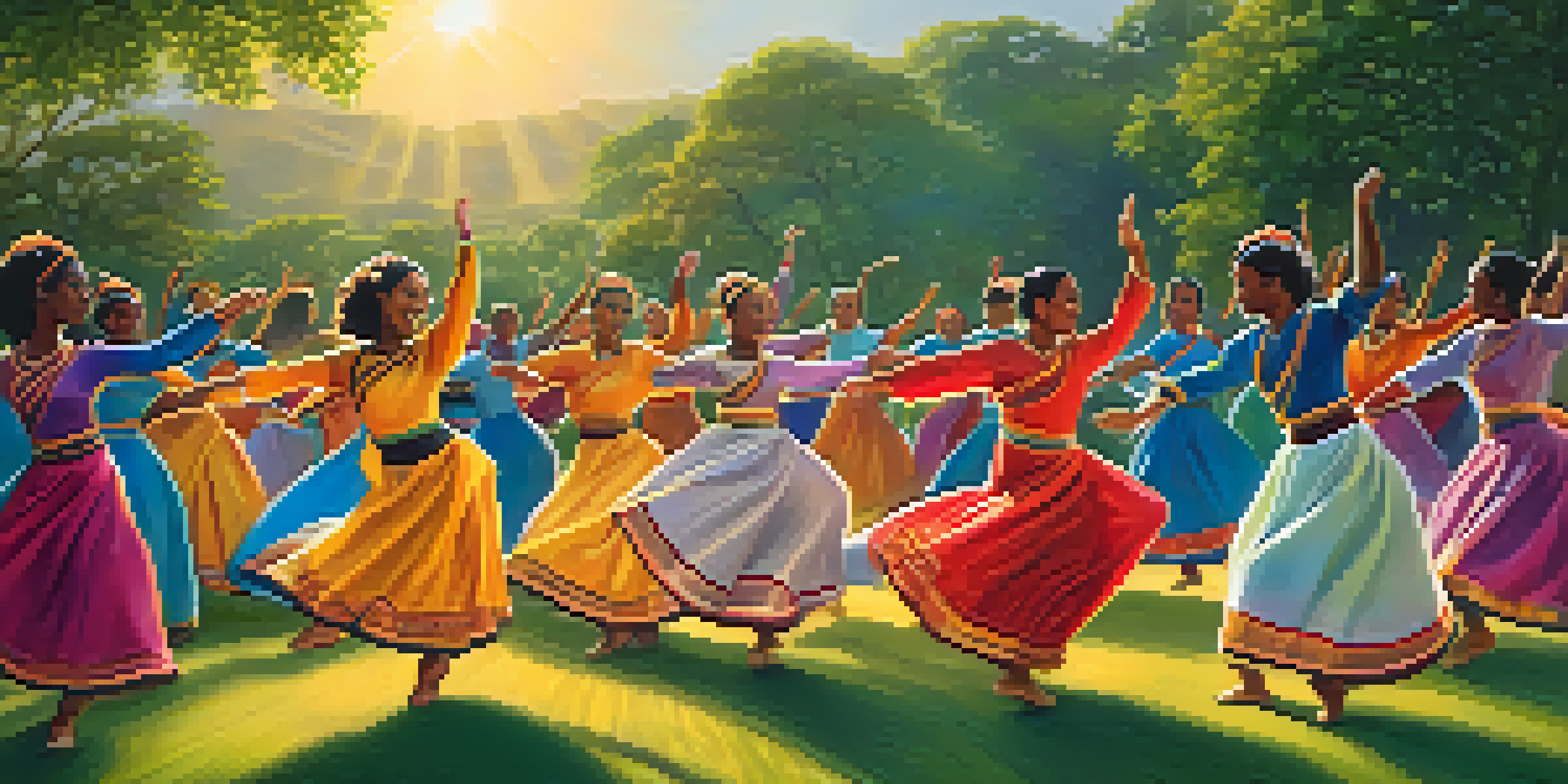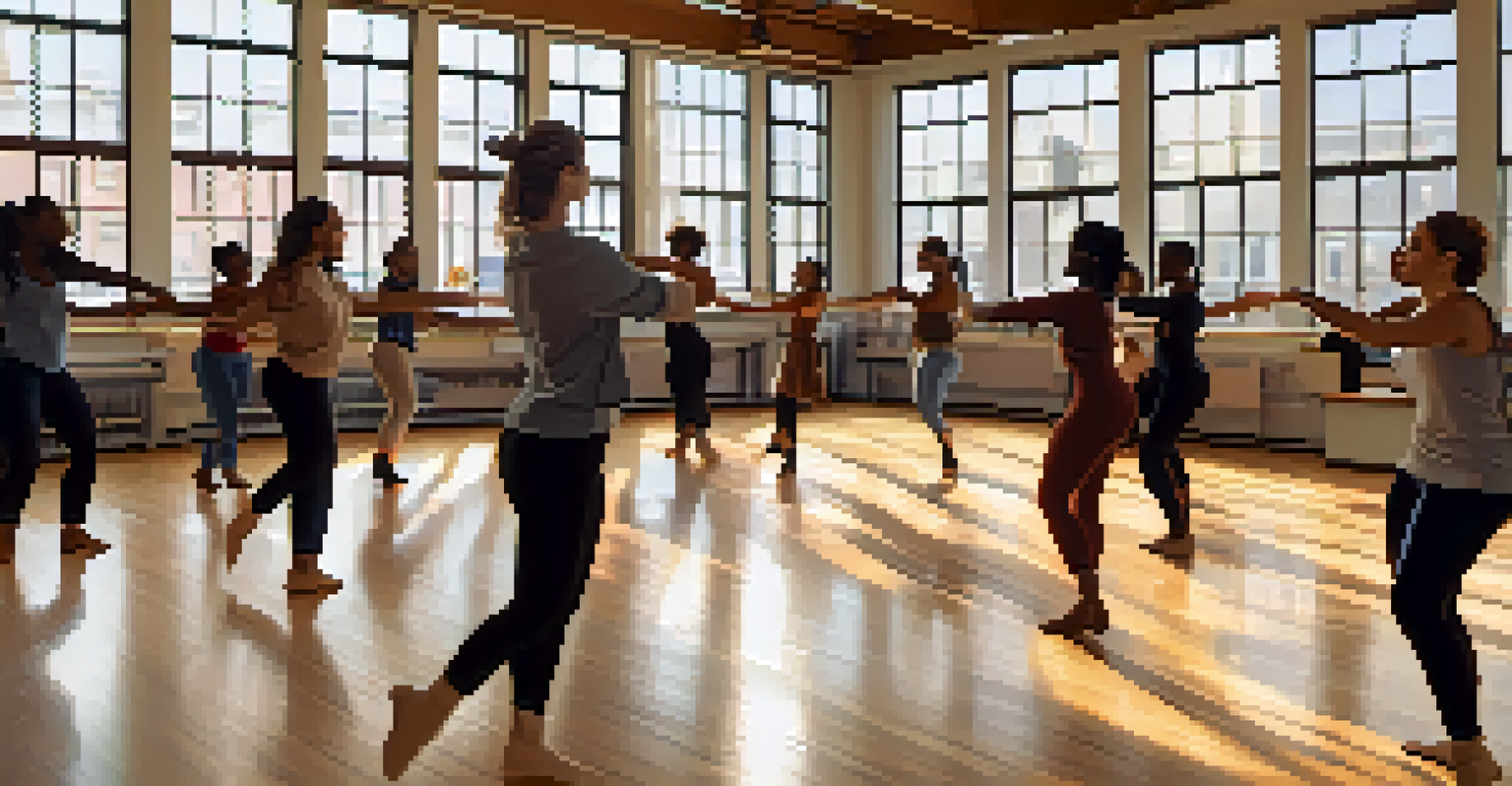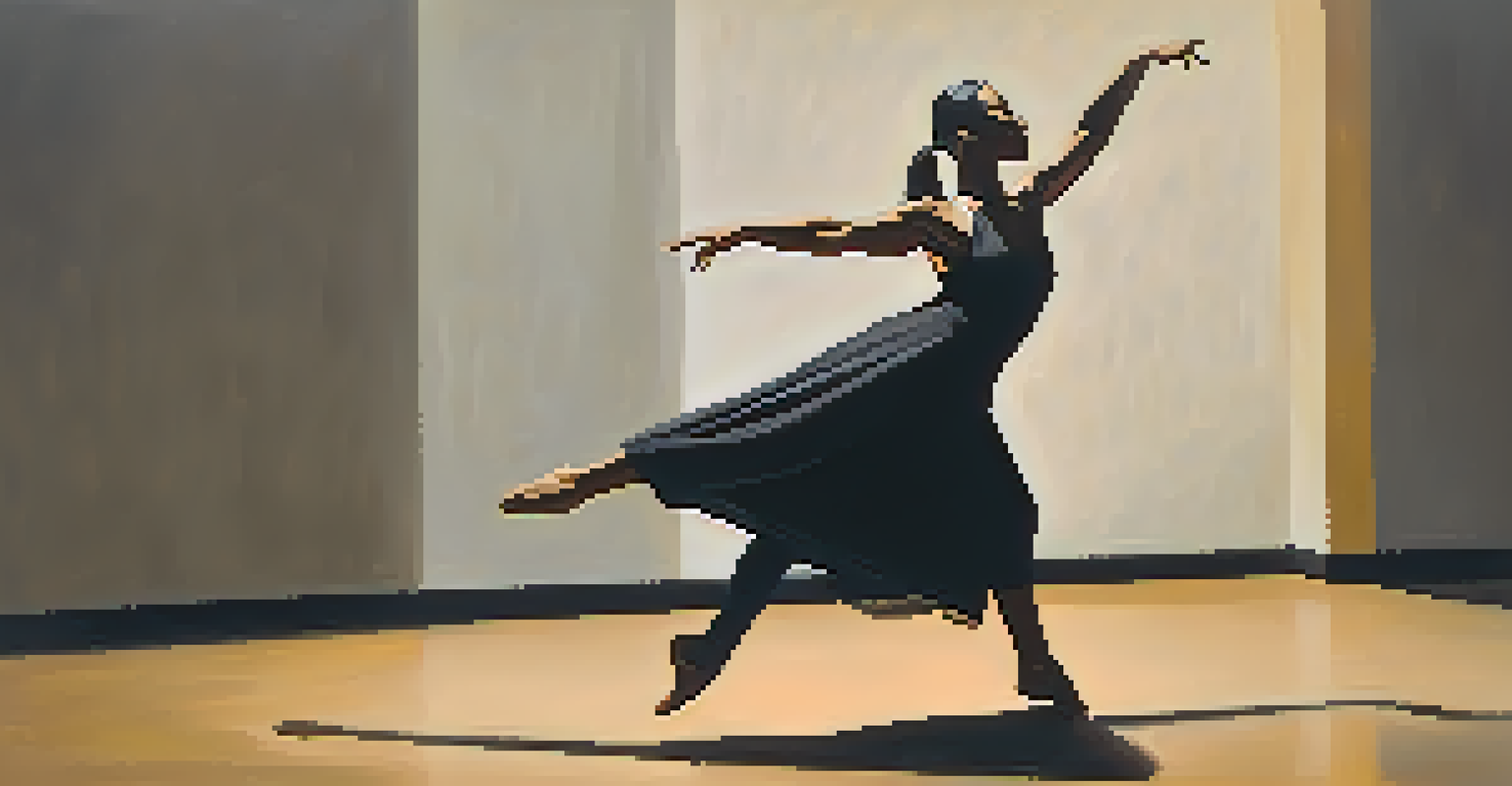The Role of Dance in Amplifying Social Justice Movements

Dance as a Universal Language of Expression
Dance transcends cultural and linguistic barriers, allowing people to communicate emotions and ideas that words often cannot capture. This universal language makes it a powerful tool for expressing social justice issues, as it can evoke empathy and understanding across diverse audiences. When dancers perform, they tell stories that resonate deeply, inviting viewers to connect with the struggles and triumphs of others.
Dance is the hidden language of the soul.
For instance, the use of traditional dance forms in protests can highlight cultural heritage while addressing contemporary issues. By incorporating elements that are familiar to the audience, dancers can create a sense of solidarity and shared purpose. This connection encourages collective action, making dance not just an art form but a movement for change.
Moreover, dance has the ability to ignite passion and inspire activism. When people witness performances that reflect their own experiences or challenges, it can motivate them to join the cause, amplifying the message of social justice. In this way, dance becomes a rallying cry, uniting individuals around a common goal of equality and justice.
Historical Examples of Dance in Social Movements
Throughout history, dance has played a significant role in various social movements. For example, during the Civil Rights Movement in the United States, artists like Alvin Ailey used dance to convey the struggles of African Americans and the quest for equality. Their performances were not merely entertainment; they were powerful expressions of a community's pain and hope, urging audiences to reflect on societal injustices.

Another notable example is the use of the tango in Argentina during the Dirty War. Dancers incorporated political themes into their performances, subtly addressing oppression while celebrating resilience. This blend of art and activism helped raise awareness and foster a sense of national identity in the face of adversity.
Dance as a Universal Expression
Dance transcends cultural barriers, enabling powerful communication of social justice issues and evoking empathy among diverse audiences.
These historical instances demonstrate that dance serves as a potent medium for advocacy. By framing social issues within the context of performance, dancers can reach people in ways that traditional forms of protest might not. This unique approach allows for deeper engagement, making the messages more memorable and impactful.
Contemporary Dance Artists Leading Change
Today, many contemporary dance artists are using their platforms to shine a light on social justice issues. Choreographers like Kyle Abraham and Liz Lerman are at the forefront, creating works that address systemic racism, LGBTQ+ rights, and environmental justice. Their performances often challenge audiences to confront uncomfortable truths and reconsider their roles in societal change.
The dance is a poem of which each movement is a word.
For example, Kyle Abraham's work frequently explores the intersections of race and identity, inviting viewers to engage with the complexities of the Black experience in America. His performances not only entertain but also educate, sparking conversations that can lead to action. This demonstrates how dance can serve as a catalyst for social discourse.
Furthermore, these artists often collaborate with communities and activists, ensuring that their work is grounded in real-world issues. By partnering with those directly affected by social injustices, they create authentic narratives that resonate on a personal level. This collaborative approach enhances the impact of their performances, making them powerful tools for advocacy.
Dance as a Tool for Community Building
Beyond performances, dance can foster community and create safe spaces for marginalized groups. Dance workshops and classes provide opportunities for individuals to come together, share their stories, and express themselves creatively. This sense of belonging is vital for those who may feel isolated or unheard in society, reinforcing the idea that community is essential for social change.
For instance, organizations like Dance for All in South Africa use dance as a means of empowering youth from disadvantaged backgrounds. Through movement, participants build confidence, develop skills, and find their voices. This not only enriches their lives but also equips them to advocate for themselves and their communities.
Historical Impact of Dance
Throughout history, dance has served as a potent medium for advocacy, framing social issues within performances to foster deeper engagement.
Moreover, these communal dance experiences often lead to collective action. When individuals unite through the shared language of movement, they are more likely to stand together in pursuit of social justice. This solidarity is crucial for driving change, as it amplifies individual voices into a powerful chorus advocating for equality.
The Intersection of Dance and Digital Activism
In the digital age, dance has found new avenues for expression and activism through social media platforms. Videos of dance challenges and performances can go viral, spreading messages of social justice to a global audience almost instantly. This digital reach allows movements to gain momentum and visibility that would be hard to achieve through traditional means.
For example, the #BlackLivesMatter movement saw a surge of dance videos that highlighted the urgency of the cause. Dancers from around the world used their art to express solidarity and raise awareness, creating a powerful visual narrative that resonated with countless viewers. This trend illustrates how dance can adapt to contemporary realities while remaining a potent form of activism.
Additionally, the accessibility of online platforms enables diverse voices to share their experiences and perspectives. This democratization of art allows for a broader representation of social justice issues, empowering individuals who may not have had a platform otherwise. In this way, dance continues to evolve as a dynamic tool for advocacy in the digital landscape.
The Healing Power of Dance in Activism
Dance is not only a means of advocacy but also a form of healing for individuals and communities affected by social injustice. Engaging in movement can provide an outlet for processing trauma, expressing emotions, and fostering resilience. This therapeutic aspect of dance is especially crucial for those who have faced systemic oppression or violence.
Programs that integrate dance therapy into social justice work have shown promising results. For instance, organizations that offer dance workshops for survivors of violence help participants reclaim their bodies and narratives. This process of healing through movement can empower individuals to take action, transforming pain into purpose.
Digital Activism through Dance
In the digital age, dance has adapted to social media, allowing activists to spread messages of social justice rapidly to a global audience.
Moreover, the collective experience of dancing together can create a sense of hope and solidarity. When individuals come together to dance, they not only uplift each other but also strengthen their commitment to social change. This communal healing is essential in building a more just world, emphasizing that art can be a powerful ally in the fight for justice.
The Future of Dance in Social Justice Movements
As society continues to grapple with complex social issues, the role of dance in activism is likely to grow even more significant. Emerging artists and activists are finding innovative ways to blend dance with other forms of expression, such as visual art and spoken word, creating multidimensional approaches to advocacy. This evolution reflects the changing landscape of social justice, where creativity becomes an essential tool for change.
Furthermore, the increasing recognition of dance as a valid form of protest is paving the way for more artists to engage in activism. Communities are beginning to embrace the idea that art can drive social change, leading to greater support for dance initiatives that focus on justice. This shift signifies a promising future where dance is not only celebrated as an art form but also revered as a catalyst for progress.

Ultimately, the intersection of dance and social justice illustrates the power of creativity in challenging the status quo. As more individuals and organizations harness the potential of dance for advocacy, we can anticipate a vibrant movement that amplifies voices, fosters community, and inspires lasting change. Dance will continue to be a vital force in the pursuit of a more equitable world.